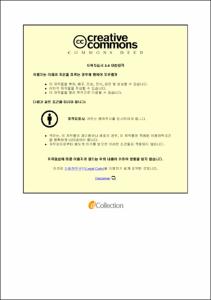数量を限定する副詞について
- Abstract
- This study focused on function of the limited quantity of the adverb did not receive attention until now. It was a demonstration to the detailed role.
First, with reference to the classification of past research was divided into four adverb to modify the quantity to “ryo-teki teido fukushi”, ‘hite-teido fukushi”, “gairyaku fukushi”.
The words belonging to each group was reviewed having any character.
Especially It was reviewed in aspects to features of quantity, representation, Noun that the difference between expected from each group terms
“Adverb to modify the quantity” were investigated based on the results obtained from the particulars. And give the two significant conclusions
・“Adverb to modify the quantity” can be classified into a functional “positive-negative”,
“expression”, “representation” of three terms”
・Functional classification based on features of noun that each adverb that have. In the perspective of features of noun, It may describe the system to adverb to modify the quantity.
- Issued Date
- 2016
- Awarded Date
- 2016. 2
- Type
- Dissertation
- Publisher
- 부경대학교 대학원
- Alternative Author(s)
- SAKUMA SHIRO
- Affiliation
- 부경대학교 대학원
- Department
- 대학원 일어일문학과
- Advisor
- 손동주
- Table Of Contents
- 第1章序論 1
1.1研究の目的 1
1.2研究の構成 4
第2章先行研究概観 5
2.1副詞の3分類 6
2.1.1陳述副詞 7
2.1.2情態副詞 8
2.1.3程度副詞 9
2.2数量を限定する副詞 10
2.2.1量的程度副詞 13
2.2.2量の副詞 20
2.2.3否定程度副詞 24
2.2.4概略副詞 28
2.2.5その他の語群 32
2.2.5.1数量詞 33
2.2.5.2全称数量詞 34
2.2.5.3形式副詞 35
2.3論点の設定 38
2.3.1数量性 40
2.3.2陳述性 43
2.3.3名詞性 43
第3章量的程度副詞 47
3.1数量性 48
3.1.1主体・対象の数量 49
3.1.2動きの量 52
3.2陳述性 55
3.2.1肯定文・平叙文 55
3.2.2聞き手に何らかの行為の実現を働きかける表現形式との共起・非共起 57
3.2.2.1数量性大の量的程度副詞の主観性 57
3.2.2.2数量性小の量的程度副詞の客観性 62
3.3名詞性 64
3.3.1「ハ」の後接 65
3.3.2「ノ」の後接 66
3.3.3被修飾 69
3.3.4名詞性の高低の異なり 70
3.4まとめ 71
第4章量の副詞 73
4.1数量性 74
4.1.1主体・対象の数量 74
4.1.2動きの量 77
4.1.2.1「イッパイ」「タクサン」 78
4.1.2.2「タップリ」「ドッサリ」 81
4.2陳述性 85
4.2.1聞き手に何らかの行為の実現を働きかける表現形式との共起 85
4.2.2評価性と情態修飾性 87
4.2.3量の副詞の客観性 90
4.3名詞性 92
4.3.1「ハ」の後接 93
4.3.2「ノ」の後接 95
4.3.2.1二つの用法 95
4.3.2.2述語としての働き 98
4.3.3被修飾 101
4.3.4名詞性の高低の異なり 102
4.4まとめ 103
第5章否定程度副詞 104
5.1数量性 104
5.1.1主体・対象の数量 105
5.1.2動きの量 107
5.1.3不完全否定の語と完全否定の語の働きの違い 108
5.1.4数量を限定する力の強弱 113
5.2陳述性 116
5.2.1聞き手に何らかの行為の実現を働きかける表現形式との非共起 117
5.2.2「アマリ」の二つの用法 119
5.2.3完全否定と不完全否定の客観性の違い 122
5.3名詞性 126
5.3.1「ハ」の後接 126
5.3.2「ノ」の後接 127
5.3.3被修飾 130
5.3.4低い名詞性 131
5.4まとめ 131
第6章概略副詞 133
6.1数量性 136
6.1.1主体・対象の数量 136
6.1.2動きの量 137
6.1.3表現性の違い 138
6.1.3.1基準値の必要性 139
6.1.3.2基準値の異なり 142
6.1.3.3表現性の違い 143
6.1.3.4全称数量詞 146
6.1.3.5数量の割合を表す語群と数量の多寡を表す語群148
6.2陳述性 149
6.2.1肯定文脈での使用 149
6.2.2聞き手に何らかの行為の実現を働きかける表現形式との非共起 151
6.2.3全称数量詞と量の副詞との対応 152
6.3名詞性 154
6.3.1「ハ」の後接 154
6.3.2「ノ」の後接 156
6.3.3被修飾 157
6.3.4高い名詞性 158
6.4まとめ 159
第7章数量を限定する副詞 161
7.1数量を限定する副詞の機能的棲み分け 161
7.1.1否定程度副詞と量的程度副詞(大) 162
7.1.2量的程度副詞(大)と量の副詞 164
7.1.3量的程度副詞(大)と概略副詞 166
7.1.4量の副詞と全称数量詞 168
7.1.5概略副詞と全称数量詞 170
7.1.6量的程度副詞(小) 172
7.1.7全体像 173
7.2数量を限定する副詞の名詞性 177
7.2.1名詞性の高低 177
7.2.2名詞性と副詞性 178
7.2.3名詞性の高低による説明 180
7.2.4「ドッサリ」の解釈 184
7.3おわりに 185
参考文献 186
- Degree
- Doctor
- Files in This Item:
-
-
Download
 数量を限定する副詞について.pdf
기타 데이터 / 2.1 MB / Adobe PDF
数量を限定する副詞について.pdf
기타 데이터 / 2.1 MB / Adobe PDF
-
Items in Repository are protected by copyright, with all rights reserved, unless otherwise indicated.